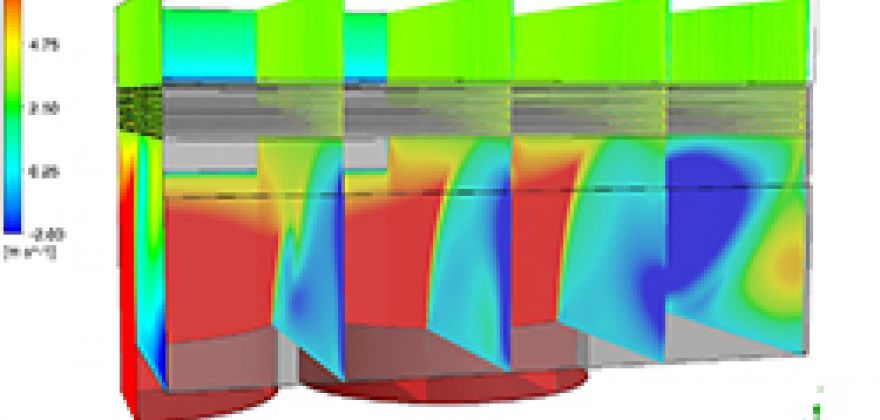How CFD can help you

Computational Fluid Dynamics (CFD) involves the numerical solution of Navier-Stokes equations of energy and momentum for a fluid flow field within a defined geometry. The use of CFD is generally recognisable through the colourful outputs generated from the results. Whilst many flow problems can be solved sufficiently accurately using empirically derived methods, where geometries are very complex or novel standard methods may not be applicable. The other advantage with CFD is that as it solves across the whole flow field, local issues can be identified within parts of the geometry by assessing the full flow field outputs for local velocities, temperatures etc.
The CFD image (above) shows simulations which were carried out to investigate air-side maldistributions of an air cooled heat exchanger. The ACHE fan was modelled by using equations to impart a swirl flow to mimic the air flow though fans without explicitly modelling them. Good air-side distributions were found in this case. CFD is a valuable tool for investigating ACHE on both the air-side and tube-side.
CALGAVIN® continues to offer CFD as part of our troubleshooting services. The types of cases for which we have received CFD enquiries include flow maldistribution, vibration, erosion and stress-induced mechanical failure. These cases typically relate to standard types of equipment seeing unexpected issues often in local areas of the equipment. Such problems are ideal for CFD analysis.
We have recently upgraded our CFD capabilities by changing our licence to include ANSYS Fluent® as well as our original ANSYS CFX® package. This now offers us the capability to model 2 phase flow problems. Our new licence also allows us the potential for faster processing.
CALGAVIN continue to invest strongly in research and CFD is an important tool in this area. Modelling of our hiTRAN® Thermal Systems has assisted our understanding of how it works and has given us the confidence to extend its range of application. CFD modelling has also been the starting point for the development of new enhancement geometries. Our test rigs are used to verify the results using prototypes but CFD can help further in the optimisation of the best options.




